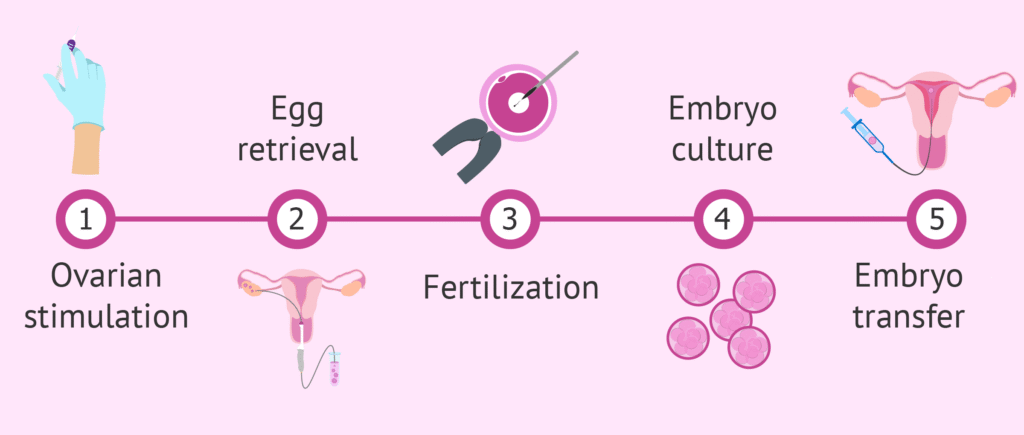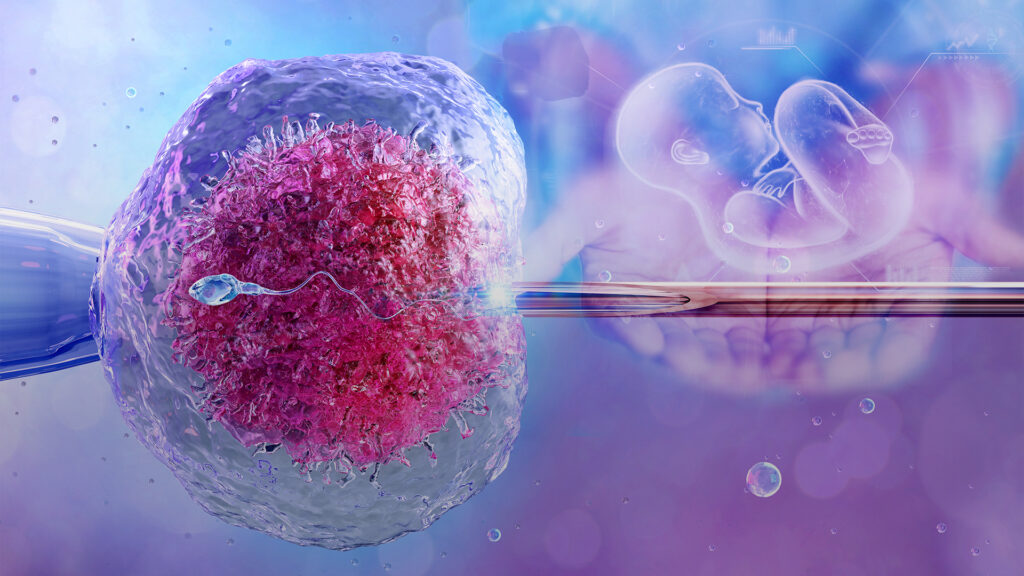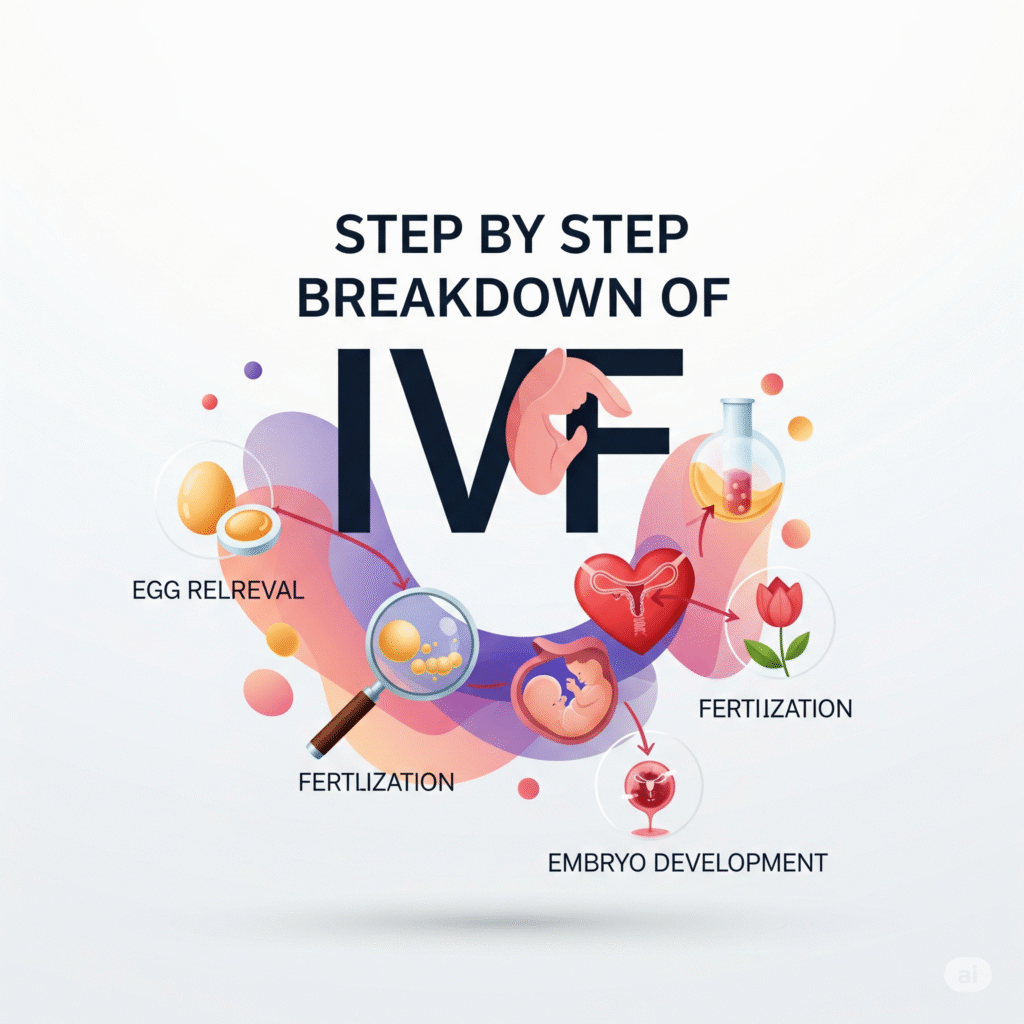Infertility is a prevalent and serious issue in modern reproduction. Animal culture and tissue techniques provide a solution to this problem through IVF and ET.
IVF stands for In-Vitro Fertilisation and refers to the complex series of procedures used to help with infertility or prevent genetic problems and assist with the conception of a child using IVF.
IVF is the most effective form of assisted reproductive technology. An egg from a woman and her partner’s sperm can be used in the procedure. IVF involves the removal of mature eggs from the ovaries and their in-vitro fertilization with sperm in a laboratory setting. After one full cycle of IVF in three weeks, the embryos are fertilized and then transferred to the uterus.
STEPS INVOLVED IN IVF
1.Oocyte collection:
Oocytes can only be taken from females who want to become pregnant; they cannot be taken from ovarian organs that are not functioning. The increase in blood levels of LH serves as a gauge of time. At the hCG stage, the development of the follicles may be stopped, preventing the release of ova. Ova is obtained by inserting a sensor and a laparoscopic scissor into the female’s abdomen.
2.Sperm collection:
Approximately 60–90 minutes before fertilization, sperm are collected, lignified, centrifuged, and cultured for 30–60 minutes at 37°C.

3.Fertilization of oocytes by sperms:
Oocytes are identified by microscopic exam and incubated for 10-15 hrs. Then, 10,000–50,000 motile sperm are added to 1 mL of culture to complete fertilization. 12–13 hours later, oocytes are examined by looking for
- Polar bodies and pronuclei count.
- Granulation of oocytes
- Change in shape of oocytes.
A zygote contains two polar nuclei and two polar bodies. Oocytes that haven’t been divided within 30 hours of insemination shouldn’t be used for implantation.
4.Embryo Transfer:
The implantation of a young embryo developed in vitro or obtained from the uterus of a female womb is called embryo transfer. A 2,4-celled stage is ideal for embryo transfer to the uterus. The patient is undergoing embryo transfer while taking oral valium. The woman is placed in a knee-to-chest position through which the cervical canal and uterine cavity are aligned. The catheter is then examined under a microscope to ensure the embryo has been expelled before an embryo is inserted into a culture medium.
About 12 to 15 days after egg retrieval, your doctor will test a sample of your blood to detect the pregnancy. The baby that is produced using this method is known as a “Test Tube Baby.”
Age, the underlying cause of infertility, the mother’s BMI, and alcohol consumption are just a few of the variables that affect the likelihood of having a healthy baby through IVF. The IVF process can be intrusive and time-consuming.
Type of IVF

1.Conventional or Standard IVF:
In the standard IVF method, ovaries are naturally stimulated by hormones to ovulate multiple eggs at a single time. Then they are extracted and fertilized with the sperm in vivo.
2.IVF with Intracytoplasmic Sperm Injection (ICSI):
This technique is particularly convenient when there is an issue with sperm motility and quality. In this method, a single motile and healthy sperm is injected directly into eggs via microinjection. It facilitates fertilization more easily.
3.Mini IVF (Mild Stimulation IVF):
In this method of IVF, doctors give lower doses of medicines. These medications help to stimulate the ovaries so that few eggs can be retrieved. This method is useful for women who have low egg reserves.
4.Natural Cycle IVF:
The natural cycle of IVF comprises the fertilization of naturally produced eggs within a woman’s natural menstrual cycle. There is no use of drugs or medication for ovarian stimulation.
5.IVF with Donor Eggs or Sperm:
When parents are unable to produce fertile eggs or sperm, they need a donor. Then the donated egg or sperm is fertilized and placed in the mother’s body.
6.Frozen Embryo Transfer (FET):
Due to various factors, some parents prefer to freeze their embryos during the IVF cycle. For the time, these frozen embryos are used in embryo transfer.
7.Preimplantation Genetic Testing (PGT):
Before implantation, embryos are screened for genetic defects using preimplantation genetic testing, or PGT. PGT comes in a variety of forms, such as PGT-A for screening for aneuploidy, PGT-M for single-gene mutations, and PGT-SR for structural chromosomal rearrangements.
8.Assisted hatching:
This method helps the embryo implant in the uterus by making a tiny hole in its outer layer.
Conclusion
IVF is a boon for the parents who are unable to conceive naturally. Nowadays, this technique is available everywhere at reach. Science has reached a level where fertilization in the lab becomes possible. Millions of infertile individuals and couples now have hope thanks to in vitro fertilization (IVF), which has transformed reproductive care. In addition to making motherhood possible, IVF is a technological advancement that brings up significant moral, emotional, and economic issues. The procedure can be emotionally and physically taxing, but its success stories show how much medical progress has improved human life. Future generations’ desire to start a family will undoubtedly be supported if IVF becomes even more affordable, effective, and morally sound as technology advances.

